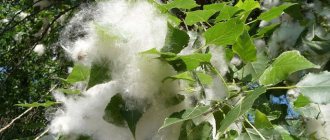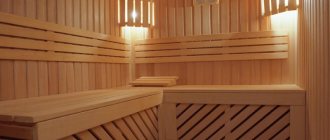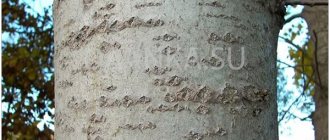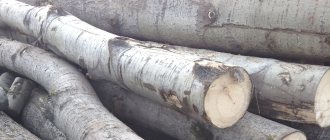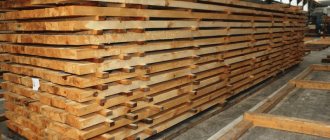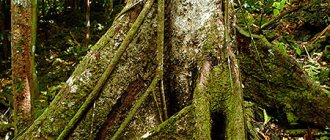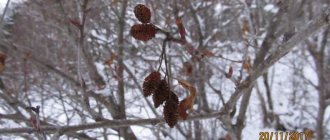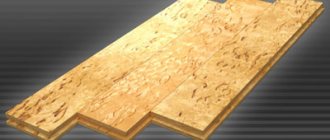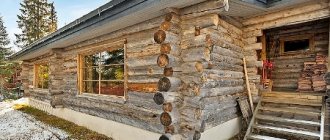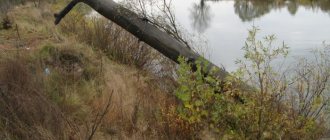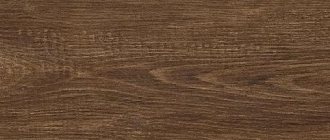Characteristic
Poplar trees belong to the genus of deciduous trees from the Willow family.
They are distributed in the temperate latitudes of Eurasia and North America, while covering part of the subtropical regions of China and Mexico, and are found in East Africa. In nature, they grow along rivers and on well-moistened slopes; some species can be found in the sand. At the same time, they need soil rich in micro- and macroelements and do not tolerate swampy places. At the same time, cultivated plants take root perfectly on any land.
The poplar genus has more than a hundred species, which are divided into six main sections:
- Mexican - plants of this group have the smallest height. They are a cross between aspen and poplar, common in Mexico and the USA;
- Deltoid - triangular-shaped leaves are located on long petioles. These trees are characterized by a pyramidal crown;
- Leucoids - considered the most ancient group of poplars. The leaves, catkins and buds of poplar of this species are characterized by large sizes;
- Popolus or folk - representatives of this group are distinguished by the fact that their buds and leaves do not secrete a sticky substance, and they are also characterized by the presence of long petioles, which is why the foliage begins to move at the slightest breath of wind. The leaves have a palmate lobe shape and are characterized by snow-white pubescence on the underside. The most famous representative of this group is the silver poplar;
- Balsamic - the leaves and buds of trees are characterized by the presence of a huge amount of fragrant resin;
- Turangi - from a distance very similar to aspen, but have a looser crown.
The height of poplar trees ranges from 30 to 60 meters, the diameter of the trunk is about a meter. Poplars grow very quickly and already at the age of forty years they acquire their final height (if they grow, it is not much), for which at one time this plant was given preference when landscaping streets.
The plant does not live long, usually up to eighty years (old poplar is highly susceptible to fungal diseases), although some species live up to one hundred and fifty.
Poplar roots are thick, strong, and in many species they are located superficially, and therefore extend quite far away from the tree. At the same time, some species, for example, silver poplar, produce many offspring on their roots, from which new trees grow.
The wood of the tree is soft and very light, the trunk is straight, the crown can have a wide variety of shapes: tent-shaped, ovoid, ovoid-pyramidal or pyramidal poplar is often found. The gray bark of a tree becomes covered with small cracks with age, while a poplar branch, on the contrary, has a smooth bark.
Both the leaves and flowers of the plant develop from the poplar bud. Poplar leaves are petiolate, arranged in a spiral along the branch; in some species the poplar leaves are pubescent, in others they are bare. It is interesting that the shape of a poplar leaf largely depends on the shoot on which it grew and even its location on it. Therefore, the same poplar leaves can have a wide variety of leaves - narrow, medium, wide.
Aspen tree
Only shade-tolerant spruce can survive aspen from the forest. The fact is that aspen is a light-loving plant, and its shoots are not capable of living under the canopy of other trees.
In winter, in the absence of leaves, aspen can be confused with poplar. Differences in location - poplars are usually not found in our forests, but aspens are rarely found in urban plantings. A more reliable difference is the kidneys. Poplars, typical of our urban plantings, have longer ones.
In summer, aspen can be confidently recognized by its rounded leaves with an uneven, notched edge.
The leaf is dark green above, light gray-green below, smooth on both sides. The arrangement of leaves and branches is regular.
Aspen leaves tremble at the slightest wind. The explanation lies in their structure. The long petioles are flattened and thinner in the middle. Aspen is a bisexual tree, pollinated by the wind.
Small female and male flowers are collected in greenish earrings. Aspen blooms in late April - early May, even before the leaves bloom. The fruits are small boxes covered with down, which allows the seeds to stay in the air longer and fly further from the tree that gave them birth.
Aspen is a tree that lives relatively short - usually 80-90 years. Only a few specimens live up to 120-140 years. One of the reasons is that the trunk core is easily affected by rot.
Wood is used to make matches, plywood, containers, cellulose and paper, and rayon.
Aspen is frost-resistant and light-loving, but in this respect it is somewhat inferior to birch. It is more demanding of soil fertility and moisture; it grows well on sandy loam, clayey, loamy fresh soils.
Lives 60-80(150) years. Trees emerging from root suckers are easily affected by rot; dried wood is durable and resistant to rot. Decoctions and infusions of buds, leaves and bark are used in medicine.
Climatic conditions
It grows almost everywhere in our country, with the exception of the polar regions. The breed is fast growing and usually lives up to eighty years (rarely reaching one hundred, in the best cases - up to two hundred).
Helpful information
However, foresters call aspen the pioneer of the forest. It, along with the birch, is the first to appear where there is at least the slightest opportunity to gain a foothold: a patch of bare soil, a fire pit, a steep slope of a quarry - if only there was at least a little moisture, the seed would definitely germinate!
Scientists observed the process of seed growth and saw a lot of interesting things. The seed sticks to the moist soil with its hairs, is pulled towards it and after a few hours its shell bursts, releasing two cotyledons. The tip of the cotyledon thickens, new hairs form on it, which begin to greedily absorb moisture, and a root begins to make its way down to the ground. In the first year of a young aspen, the root is sometimes buried into the soil up to thirty centimeters, only after which the above-ground part begins to develop more vigorously.
Often by autumn the aspen grows 20-25 centimeters and goes into the winter under the snow.
Features of growth
The genus of poplars (Populus) consists of 25-30 species, the most common being aspens. Trembling poplar or aspen. Scientific name: Populus tremula. Aspen leaves tremble at the slightest wind.
In winter, in the absence of leaves, aspen can be confused with poplar. Differences in location - poplars are usually not found in our forests, but aspens are rarely found in urban plantings. A more reliable difference is the kidneys. Poplars, typical of our urban plantings, have longer ones. In summer, aspen can be confidently recognized by its rounded leaves with an uneven, notched edge.
The leaf is dark green above, light gray-green below, smooth on both sides. The arrangement of leaves and branches is regular.
Physico-mechanical properties of poplar wood
On what trees does chaga grow, how can you distinguish it from tinder fungus?
The density of wood is low; at a humidity of 12-15% it is 400-500 kg/m3. Poplar is classified as a light tree species. But the strength of wood can be compared with other hardwoods. Resistance to cracking is high, but chips easily. Abrasion resistance is good, since the surface fibers are compacted by mechanical stress.
Drying
Poplar wood dries slowly, without cracking or warping. Drying black and white poplar wood requires different modes. The fact is that in white poplars the core and sapwood have approximately the same moisture content, but in black poplars the core is wetter than the sapwood. This must be taken into account when drying workpieces.
Treatment
Processing is not difficult. Wood is easily amenable to sharp tools, both manual and mechanized. It cuts easier when fresh, but when processing dry workpieces, fibrous sawdust quickly wears out the saws.
Due to its friability, wood is difficult to sand and polish. The gluing process is not difficult. Easily painted with stains and mordants.
Poplar lumber
Aspen: how to distinguish a tree from others
Aspen is a tree that lives relatively short - usually 80-90 years. Only a few specimens live up to 120-140 years. One of the reasons is that the trunk core is easily affected by rot.
Aspen and birch are easy to distinguish. But if you rarely walk in the forest and don’t remember what these trees look like, this article will help you a lot.
You will be able to distinguish them even in winter.
Applications of poplar and interesting notes about the tree
How to distinguish a rosehip shoot from a rose
Despite the fact that many people do not like the time when poplar plantations cover everything with fluff, it is worth recalling the benefits and some aspects of the use of this plant. Poplar is characterized not only by a high growth rate, which is beneficially used in landscape gardening, but also helps to purify the air from urban pollution (gas and smoke). In addition, it helps to destroy pathogenic microbes. At the same time, no other representative of the flora, not even conifers, can compare with it in terms of air filtration.
Poplar wood is soft and is successfully used in industries such as construction, furniture or paper industries. In order to use poplar wood with specified characteristics for industrial purposes, work is being done to develop hybrid and genetically modified varieties. Poplar foliage and inflorescences serve as the material from which natural-based dyes are made - yellow and violet, respectively.
Medicinal preparations are prepared from the buds of black poplar species, and they are also included in the popular Riga balsam. The shoots can be used as branch fodder for livestock feed.
It is curious that if the poplar growing near the house has a height of 50–60 m, then it can serve as a real lightning rod.
Since it has been found that some species of the genus have the property of not producing fluff, they are actively used in the green architecture of cities and park areas. Similar exceptions are laurel-leaved and pyramidal poplar. They try not to get rid of old poplar plantations, but carry out pruning in such a way that for about five years they will not encounter the problem of poplar fluff.
However, this aspect is not the problem with old poplar trees. Since the wood of the plant is not only soft, but can also easily rot, and the root system becomes extremely weak, such specimens may not withstand gusts of wind. Such a poplar can fall at any moment in windy weather or a thunderstorm and fall on the road or residential buildings. The worst case scenario would be a fall on a person or vehicle, so plants that have reached 60–80 years old must be inspected and removed if any traces of rottenness are detected.
Where does aspen grow and its differences from poplar
Common aspen is one of the important forest-forming species of Russia and is found throughout almost the entire territory of the country, including the European part, as well as the regions of the Far East and Siberia. In addition, this tree can be found in Kazakhstan, Mongolia, Korea, China and many European countries.
It thrives on soils of any type in forest-steppe and forest zones, mainly along the banks of rivers and ravines, as well as on the edges and areas with elevated terrain.
As a rule, this tree grows in a group, forming aspen forests, or is part of mixed forests, combined with alder, larch, pine and birch. Due to the deep location of the roots, aspen is not very sensitive to small forest fires.
So, what is the difference between aspen and poplar:
- Poplar buds bloom much faster in spring, releasing a characteristic odor and the appearance of stickiness. Aspen buds “come to life” more slowly.
- Aspen blooms in early spring, before the leaves fully bloom. The poplar blossoms in the summer, spreading fluff around itself, while the inflorescence of the aspen is long earrings.
- The leaves of these trees vary in shape.
- Aspen branches are more fragile compared to poplar.
On the left are aspen leaves, and on the right are poplar leaves.
Green alleys and streets of Dushanbe
Honey mushrooms: how to distinguish them from false gifts of the forest?
When I first came to the city of Dushanbe and was driving from the station to the hotel, the road always went along alleys, the main tree of which was a slender pyramidal poplar. It seemed to me that we were driving through some kind of dacha suburb, and the city itself would be somewhere ahead. And I was very surprised when the driver stopped and said:
We've arrived.
Green alleys turned out to be central streets. In the city, each residential block is surrounded by a dense wall of tall pyramidal poplars. All streets and alleys are continuous city boulevards. This green miracle was created using artificial irrigation. Numerous irrigation ditches run from the highest mountains of the Pamirs and branch out along all the streets and alleys. There are grooves next to the sidewalks, and water gurgles there. Without them, trees could not exist in arid climates.
This construction of the city was caused by vital necessity. For residents of humid central Russia, it is difficult to imagine how dry the land is in the deserts and steppes of Kazakhstan. The city was built at a time when asphalt had not yet come into use. Now, in Soviet times, the city streets were paved with asphalt, but before they were ordinary dirt roads; If the cart rumbles, dust will rise. And it was necessary to somehow protect the housing. The best way is to plant trees - pyramidal poplars.
These slender, beautiful trees look like tall pillars entwined with lush green fringe. They stand side by side, like in a stockade, and form solid walls running along the sidewalks and blocking the houses from the roadway. Dust does not penetrate through such a dense barrier.
Therefore, pyramidal poplars are an indispensable decoration of villages and cities of the southern and steppe arid zone: Central Asia, Southern Kazakhstan, the Caucasus and Ukraine.
The vitality of the pyramidal poplar
Pyramid poplar exists in the wild only in the Himalayas, and in our country and in other countries it is bred artificially. It entered into culture several thousand years ago and was widespread in ancient Rome and ancient Greece, from where in ancient times it penetrated into the Crimea and the entire Black Sea coast, because Greek colonies existed there.
It is very easy to grow: just stick a piece of a cut branch into the ground and a whole tree will grow. The inexhaustible vitality of this tree is amazing. The ability to reproduce by vegetative means, when a severed piece grows back the missing organs and turns into a whole plant, is also characteristic of some other tree species, but with repeated repetition of such reproduction, later generations become weaker and more short-lived.
The pyramidal poplar has been propagating only by cuttings for thousands of years, during which time a great many generations have changed. It is impossible to even trace through which countries the ancestors of at least these trees now growing in Dushanbe passed. But the pyramidal poplar shows no signs of weakening or degeneration. It is still a strong, healthy and fast growing tree.
It is characteristic that in our country until now there were only male specimens and not a single female one. Of course, they do not produce fruits or seeds, but this is convenient: they do not litter the streets with fluff.
Now we also have females. Scientists need them for crossing and breeding new varieties. And new varieties will help push this frost-unresistant plant north. If now beautiful poplar boulevards decorate Vladikavkaz, then why not have exactly the same ones in Moscow?
At the Exhibition of National Economic Achievements in Moscow, a pyramidal poplar bred by Academician A. S. Yablokov has been growing well for many years. The trees have already reached a height of twenty meters, and will become even taller.
In order not to miss my next article and discuss it, subscribe in the upper right corner of the site. Visit the site and bring your friends. I am always glad to see you and I am sure that you will definitely find something interesting for yourself here.
- Botanical description
- Spreading
- Application
- Types of poplar
- Landing
- Reproduction
- Diseases and pests
The poplar genus is one of the most widespread and numerous among the representatives of the Willow family. In the temperate climate of Russia it is difficult to find an area where these trees are not found. Their popularity is explained by their unpretentiousness to the surrounding natural conditions, frost resistance, rapid growth and the ability to recover even if most of the trunks are destroyed.
Chemical composition, hardness and strength properties
The bulk of aspen wood consists of various organic substances, including four main elements: oxygen, hydrogen, carbohydrate and nitrogen. In addition, it contains a certain amount of minerals, which during combustion form an ash residue.
It was noted that the chemical composition of aspen wood changed depending on its age: in older aspens, the titanium content increased and the amount of copper, aluminum, silicon, iron, nickel, strontium and zirconium decreased. The quantitative ratio of other elements remained unchanged.
The organic compounds in aspen wood include: ash – 0.26%; pentosans – 27.47%; lignin – 21.81%; cellulose – 41.77%. The impact hardness of aspen wood is 640 gmm/mm2. That is, it can be classified as a soft breed.
Recommended species and varieties
P. alba "Raket" (syn. "Rocket") (T. white, T. silver)
Ascending gray branches form a narrow pyramidal crown. The leaves are 7 cm long, usually five-lobed. They are glossy green on top and silvery-white felt underneath, creating a shimmering effect when they sway in the wind. In heavily windy places, young specimens require support. Excessive root suckers can be a problem. The height and diameter of the plant is 15x5 m (20 years). Maximum height is 20 m.
Rising gray branches
P. alba "Richardii"
The leaves are 6-12 cm long, golden-yellow on top, silvery-felt underneath. The height and diameter of the plant is 10x6 m (20 years). Maximum height - 15 m.
P. alba "Richardii"
R. canadensis "Aurea" (T. canadian)
Very powerful trees with almost triangular light yellow leaves 8 cm long, which turn golden in autumn. The height and diameter of the plant is 16x12 m (20 years). Maximum height - 20 m.
Very powerful trees with almost triangular light yellow leaves
P. candicans "Aurora" (T. macrophylla)
The leaves are broadly oval, up to 12 cm long, fragrant with pine needles, colored in different shades of cream, pink and green. In middle age, these trees are usually severely affected by cancer. The height and diameter of the plant is 16x8 m (20 years). Maximum height - 18 m.
Broad oval leaves
P. nigra “Lombardy Gold” (T. black, Osokor)
A pyramidal, slowly growing tree with triangular yellow leaves up to 8 cm long. The height and diameter of the plant is 5x1.5 m (20 years). Maximum height - 8 m.
Pyramidal, slow growing tree
P. tremula "Pendula" (Aspen)
One of the most unpretentious weeping trees, more suitable for standard garden plots than ordinary aspen. Prefers moist, fertile soil, but grows well in a variety of soil types, even in the city. In early spring, grayish-purple catkins form before the rounded leaves bloom. Root suckers may appear, which requires careful selection of the planting site. The height and diameter of the plant is 8x7 m (20 years). Maximum height - 10 m.
One of the most unpretentious weeping trees
Specific and volumetric weight of wood
Important indicators on the basis of which the quality of the wood used is assessed include its specific and volumetric gravity. To calculate the specific or relative weight of a wood material, its weight is divided by the same amount of water.
For aspen wood it is, at a humidity of 12%, 510 kg/m3. Moreover, unlike trees of other species, the values of this indicator in aspen are not constant, but can vary quite widely.
This is due to the structure of the material’s fibers, which are highly porous. In other words, commercial aspen wood always contains a certain amount of moisture, which it easily releases when drying and picks up just as easily when placed in a more humid environment.
In addition to specific gravity, it is also customary to distinguish between the volumetric weight of wood or the weight of a unit of volume, which is measured at a raw material moisture content of 15%.
Data on the volumetric weight of aspen with changes in its humidity are given in the following table:
| Humidity percentage | Weight 1kg3 wood |
| 12-18% | 500 |
| 18-23% | 550 |
| 23-45% | 600 |
| Freshly cut | 800 |
Meaning and Application
Poplar wood is widely in demand for industrial purposes. It is light and soft. It is used for the production of:
- paper;
- artificial silk;
- plywood;
- lumber;
- furniture;
- boats and so on.
Despite the low thermal conductivity of wood, the raw material is used to make firewood and charcoal. But these products are of low quality. The buds produce purple dye, and the leaves produce yellow dye. Shoots with leaves and young shoots are used as food.
Healing properties of poplar
Poplar often saved people from various troubles. The healing properties of poplar have been used in folk medicine since ancient times.
Leaves, shoots and buds are also used in pharmaceuticals; they have a lot of useful properties:
- The bark contains a large amount of alkaloids, tannins and glycosides. Decoctions based on it have a beneficial effect on the state of the nervous system and digestive system.
- Infusions from the leaves can speed up the healing process of wounds.
- Kidney-based teas help get rid of inflammatory processes and have a beneficial effect on the condition of the body as a whole.
Decoctions and ointments based on poplar buds and leaves have a beneficial effect on the condition of the ox, help fight insomnia and depression.
Use in landscape design
Poplar is an unpretentious and hardy plant that can grow in infertile areas and also withstand natural disasters (frost, drought, heat). The culture is often found in harsh regions where large poplar forest parks are planted. Naturally, caring for large plantings is problematic.
The tree has a beautiful lush crown, with which you can easily create pleasant partial shade. Decorative poplars look beautiful in group plantings. The plant grows well next to acacia, thuja, and juniper.
Consecutive planting of seedlings will help create a real wall that will separate it from the street or neighboring areas. The result is beautiful dense hedges, 1.5-2.5 m high.
The downside of poplar hedges is the bare lower part, so it is recommended to consider a two-row planting of plants. Low crops are planted in front, covering the almost black trunks of poplars. For such purposes, low-growing shrubs are used.
Poplars are not very popular because they require frequent pruning, as the plant grows and develops rapidly. Very quickly, in place of the cut branches, young shoots appear, from which a new crown is formed.
Poplar is widely used for landscaping streets and roads; it is planted in industrial zones. These plants can quickly destroy harmful components in the air. To get rid of poplar fluff, only male seedlings are used.
By choosing the right type and size of trees, you can create beautiful green frames for buildings near buildings. Poplar plantings are complemented with other crops (maples, chestnuts, birches, lindens, various shrubs), resulting in beautiful compositions. Row plantings of poplars mark the boundaries of parks and squares, gardens and other objects that intersect with the street. Poplars emphasize the decorative nature of compositions and provide cool shade.
It turns out that the familiar and ordinary poplar is not as simple as it seems. It is amazing in its properties and purpose. These giants are able to purify the street air better than any filters. But the plant is undemanding and unpretentious, develops quickly and actively with minimal care.
Aspen: description, photo, range of applications
They can often be seen around birch trees, especially in winter.
Distinguish by branches
The branches of the birch are thin and look like a cobweb. Hanging branches do not have their own rigidity at all. The color of the thin branches is dark, one might say black.
They bend beautifully. They are used to weave wreaths and are actively used as bath brooms.
Aspen branches are very different. They are thick, dense, and not at all elastic.
It is difficult to bend an aspen branch; it is easier to break it. They do not differ in color from the trunk.
By juice
In the spring, before the leaves bloom, an active process of sap movement occurs inside the birch. It is popularly called birch tree. It is loved and collected by many people. It has a pleasant sweet taste. If you make an incision on the trunk in the spring, sap will begin to flow out.
Aspen also has sap flow.
But not so much. Aspen sap is bitter. And it has no culinary or medical significance.
For mushrooms
If you like to pick mushrooms, then this will also help differentiate the two trees.
There is an opinion that mushrooms grow under a certain type of tree.
So aspen boletus grows near aspens, and boletus grows where birch trees grow.
This popular observation has a right to life.
But you shouldn’t strictly focus on it.
Aspen, interesting facts
- Aspen is widespread in temperate and cold climate areas of Europe and Asia.
- Lives 80-90, rarely up to 150 years.
It grows very quickly, but at the same time suffers from wood diseases. Old, large and healthy individuals are a rarity.
- Aspen is distributed throughout Russia.
- Outside Russia, it is distributed in Europe, Kazakhstan, China, Mongolia, and the Korean Peninsula.
- Aspen bark is used for tanning leather.
It is used to produce yellow and green paint.
- The wood is used to build houses, used as roofing material (in Russian wooden architecture, church domes were covered with aspen planks), in the production of cellulose, plywood, matches, containers, etc.
- The trembling of aspen leaves in the Russian tradition is associated with an episode of the New Testament - the suicide of Judas Iscariot.
People consider aspen a cursed tree because, according to legend, Judas the Traitor hanged himself on it.
- Aspen is credited with the ability to ward off evil spirits: the witch is afraid of aspen.
If you stick aspen branches into the wattle fence of a fence, then a witch cannot enter such a fence and will not spoil the cows.
- It is believed that an aspen stake driven into the heart of a vampire can stop him.
- Sayings: Aspen makes noise even without the wind; Aspen trees will not produce oranges;
- It is said about a frightened person that he “trembles, shakes, “like an aspen leaf.”
- “Aspen does not burn without kerosene” (meaning the low value of aspen firewood as fuel)
- Wooden shoes were made in the Netherlands mainly from aspen.
Do you think the photo shows an aspen tree in the fall?
Golden leaves... Nothing like that, it's early spring.
large-leaved
Large-leaved poplar, also known as Ontario poplar or Aurora, is a very beautiful, showy plant with large leaves. In European countries, this tree grows up to 10 m in height; in our frosty winters, it is significantly shorter.
When this tree freezes and its branches die, a pair of new shoots forms at the tip of each branch. As a result, the crown of this low poplar is very lush, the ends of the shoots are decorated with large leaves, on which cream spots are clearly visible.
This creamy color makes the large-leaved poplar very decorative; in mid-summer the color of the leaves changes to light green. The length and width of the leaf reaches 10 cm.
The tree is not resistant to frost and therefore short-lived. The average lifespan of this plant is 65 years.
Planting the Aurora poplar is advisable in places protected from cold northern winds; the tree needs abundant sunlight; urban gas pollution does not depress the plant.
Use in everyday life
Currently, the use of aspen in everyday life is limited to the use of wood. In addition to aspen firewood, aspen lining, which has a reddish color, is very popular. This color is given to wood by the large amount of iodine it contains. That is why aspen is highly valued for cladding the walls of baths and saunas.
But our ancestors never fermented cabbage without aspen twigs, which were placed in a barrel with pickling so that the product would not ferment. In addition, they also consumed the bark of this plant in winter. The powder obtained by grinding dry bark was added to food. This helped relieve fatigue and restore muscle performance. This property of aspen was especially valued by hunters making long hikes in search of prey.
Description
The pyramidal poplar looks like a slender pyramid, it has the same geometrically correct proportions, a harmonious appearance due to the balance of the green mass and an upright, even trunk. The columnar type of black poplar with a narrow crown is also called Lombard or Italian.
This tree has several interesting features.
- Poplar lives a long time, its lifespan is about 300 years, but this depends on proper periodic pruning and how favorable its growing conditions are.
- This light-loving plant grows very quickly, especially in the first 10 years. If not pruned, the height can reach from 35 to 45 m. Low poplars are the result of human activity. Every year, for the purpose of rejuvenation, the top of the tree is cut off.
- Depending on whether the plant has a columnar or narrow pyramidal crown, its diameter ranges from 4 to 5 m.
- Old trees can reach a girth of 1 m.
- This species has a beautiful, smooth gray bark with a greenish tint; cracks can often be seen on it, but this is typical for mature trees.
- The shoots grow upward and slightly to the sides, the leaves are rich green in the shape of diamonds, have jagged edges and are attached to the branches with short, strong petioles. In September they turn yellow, and by mid-October they fly around.
- In April, at the same time as the leaves bloom, the crop blooms. In this case, the flowers are connected into inflorescences - earrings. Male flowers are dark red, female flowers are white. At the beginning of summer, elongated capsules of poplar fruits appear, containing several seeds covered with fluff.
- The poplar root system is powerful, accounting for a third of the height of the plant, goes deep into the ground, and is also significant in volume. Some shoots protrude above the ground, which does not prevent the roots from performing their basic functions.
- Not everyone knows, but the pyramidal variety of poplar releases oxygen into the surrounding space day and night, since the tree photosynthesizes around the clock.
- The resin collected by bees from pyramidal poplars is processed into such a useful substance as propolis - a medicinal component that can enhance immunity and has disinfectant and antibacterial properties.
Pyramid poplars are cold-resistant, but severe frost can disrupt their normal functioning. Female trees are quite rare; male plants are considered the most cultivated and widespread. They are used in cities to create shady alleys; they bloom, but do not form fluff. At the same time, pyramidal poplar is one of the amazing plants that has the ability to change gender.
Harvesting and storage of aspen
Various parts of the tree have healing properties:
- bark (harvesting period - early spring, when the sap begins to move along the trunk);
- buds (harvested at the same time as the bark, as soon as they begin to swell);
- leaves (harvested during May - June).
We invite you to familiarize yourself with the terrible harm of vegetable oil.
Why don’t you even want to look in his direction! The collection of bark occurs as follows: on young shoots of trees, the bark is cut in a circle in two places, and then a longitudinal cut is made between these cuts, and the bark is carefully removed from the branch. After this, all the harvested bark is laid out in a thin layer and dried in the fresh air in a shaded place.
Poplar - characteristics of wood
January 26, 2022 The poplar tree is common in central Russia; it is a deciduous tree. The maximum height of the plant is 30 meters; the crop reaches this size at the age of 40.
The poplar root system is powerful, superficial; often extends beyond the crown perimeter.
The annual rings on this wood are barely noticeable, even in the middle part, which makes it one of the best types of lumber. Boards, timber and logs have a uniform surface and inexpressive texture. The color of the material is white with a barely noticeable greenish tint.
For the production of lumber, it is recommended to use trees under 40 years of age. Old trunks have a loose structure and are unsuitable for use in construction.
Varieties
The poplar tree belongs to the willow family. The most famous types of this culture are:
- white poplar;
- black poplar;
- pyramidal;
- aspen (trembling poplar).
Most trees of these species grow in the wild, but some varieties are grown on special plantations for planting within populated areas. Each subspecies has its own unique properties, color and texture of wood, but their technical properties are almost the same.
Characteristics
The relatively small scope of poplar is associated with the capriciousness of the tree. To make boards or plywood, only the upper part of the plant is used, since the tree trunk often rots near the butt. In addition, the material loses a significant part of its volume after drying. As a result of natural drying, the volume of lumber is greatly reduced. When processing long logs in special chambers, the wood may warp.
Poplar has an average density, up to 450 kg/m3. This material has soft wood with a huge amount of longitudinal fibers. Lumber does not split well, but can be processed well with mechanical and hand tools. Our ancestors made dishes from poplar, hollowed out troughs and tubs. Without proper treatment, wood begins to rot and mold appears on its surface, so lumber that will be used in construction must be treated with antiseptics.
The best type is considered to be plants with a pyramidal crown shape. These trees are a hybrid of aspen and white poplar. Thanks to improved technical characteristics (resistance to loads, expressive structure of the material and low shrinkage), such trees are grown in special nurseries in North African countries, as well as in Iran and Argentina.
Advantages and disadvantages
The main advantages of poplar are:
- beautiful wood texture;
- relatively light weight;
- sufficient strength of the dried material;
- good thermal insulation qualities (low thermal conductivity);
- ease of processing;
- absence of secretions, resin.
The disadvantages of wood include a significant decrease in the initial volume upon drying, the need to treat the wood with special compounds, warping of the trunk during drying, and a relatively small yield of lumber.
Scope of application
Due to its low strength, poplar is not used for the manufacture of load-bearing structures, beams and logs, but lumber from this tree can be used for other purposes. One of the directions is the production of plywood sheets, which will be used for formwork.
Poplar wood is often used to make wooden containers, chipboards, furniture panels, pallets (pallets for transporting goods), and coffins for burials. Production waste is sent to paper mills for recycling.
Soft poplar wood is easy to work with and serves as a raw material for making carved panels and other decorative elements and garden sculptures.
In the old days, poplar was used to make railroad sleepers.
Density, strength and moisture content
One of the important indicators that directly affects the quality and final appearance of processed wood raw materials is wood density. This term refers to the ratio of the mass of wood of a certain moisture content to its volume.
Moreover, the more humid the woody part of the tree is, the greater its density. In addition, when assessing wood, an indicator of the conditional density of wood is also used, which is the ratio of the mass of the test sample in a completely dried state to its volume at the hygroscopic limit.
Indicators of density and conditional density of aspen are as follows:
| Density when dried | 470 kg/m3 |
| Conditional density | 400 kg/m3 |
Density coefficient at different humidity levels:
| Humidity level, % | Density coefficient, kg/m3 |
| 10 | 490 |
| 20 | 510 |
| 30 | 540 |
| 40 | 580 |
| 50 | 620 |
| 60 | 660 |
| 70 | 710 |
| 80 | 750 |
| 90 | 790 |
| 100 | 830 |
| In freshly cut condition | 760 (82) |
Thus, you can see that aspen wood has an average density of 490 kg/m3. The natural moisture content of this material when freshly cut is on average 82% with a maximum moisture content and water absorption of 185%.
For common aspen, these indicators will look like this (according to research by S.I. Vanin):
- Ultimate compressive strength in the direction along the fibers (at a humidity of 15%) – 374 kg/cm2.
- When stretched in the direction along the fibers - 1450 kg/cm2.
- When performing shearing in the radial plane – 44 kg/cm2.
- During the static bending operation (at a humidity of 15%) - 673 kg/cm2.
- When performing impact bending in the tangential direction - 0.37 kgm/cm3.
According to the “Handbook of Mechanical Properties of Wood”, the average values of wood strength will be as follows:
- Strength limit for static bending is 76.5 MPa.
- Tension along the fibers is 121 MPa.
- Compression along the fibers is 43.1 MPa.
- Splitting along the radial plane – 6.15 MPa.
- Along the tangential plane – 8.42 MPa.
- Impact strength – 84.6 KJ/m2.
- The modulus of elasticity of aspen wood during static bending is 11.2 GPa.
Aspen wood has good flexibility in various types of processing, including cutting, bending, painting and polishing. In addition, it peels well.
Types of poplars
The genus includes about 90 species. Most of them are wild trees. Many representatives are the work of breeders. These hybrid poplar species combine decorative properties and resistance to adverse conditions.
White or silver
White poplar (Populus alba) is found under different names: silver, belle, snow white. Most common in Asia and Europe. Trees of this variety grow up to 30 m. White poplar is a long-lived tree, its age reaches 65-400 years. The poplar trunk is short but thick. The crown is spherical. The branches begin to grow at a height of 2 meters from the soil. The bark is gray and smooth, sometimes with a greenish tint. In trees that are too old, the color of the bark becomes almost black.
Small silvery buds appear on the shoots. The leaves appear deltoid in shape. The leaf blade is green on top and light silver underneath.
In spring, elongated inflorescences cover the shoots. The seeds resemble cotton wool that scatters throughout the streets. Active flowering occurs in mid-May, seeds ripen by July.
Canadian view
Canadian or delta poplar (populus deltoides) is the work of breeders. Externally, this hybrid resembles a delta-shaped tree. The variety is distinguished by its large height and spreading crown. In spring, large brown buds, abundantly covered with gluten, appear on the tree.
The leaves are shaped more like a triangle, with small teeth along the edge. Width up to 10 cm, length up to 7. Attached to shoots on a cutting 3 cm long.
Poplar catkins form during the period when the buds swell. Full flowering begins in April. At the beginning of summer, seeds form and disperse over a long distance. Canadian poplar is considered the tallest.
Black poplar (sedge)
In the middle zone to Perm, as well as in the Crimea, Central Asia and Western Siberia, black poplar (Populus Nigra) grows. This is a powerful tree that chooses light forests, river banks with loose soils.
The bark of young specimens is initially light gray and smooth, but over time it becomes almost black with cracks. The leaves are diamond- or triangle-shaped and dark green. The plant is hardy and easily tolerates cold winters and periods of drought. The plant is undemanding to soil, but develops much faster in nutritious soils with a high humus content.
Sweet poplar
The most common fragrant poplar (Populus Suaveolens) is in Siberia (its eastern part); the Far East is considered its homeland. It is also found in Northern China and Mongolia. The maximum height is about 20 m. Alleys of this ordinary, familiar poplar are found on many streets of Russian cities.
The fragrant poplar is not too demanding on the composition of the soil, but the plant is most suitable for black soil or clay areas. It is characterized by high frost resistance; frosts up to 40 ° C are not terrible.
It blooms simultaneously with the leaves blooming, by mid-June it is in full bloom and poplar fluff is scattered throughout the streets.
Pyramid view
The tallest variety of poplars, loving light. The height of the trees is 35-40 m. The duration of existence is about 3 centuries. Pyramidal poplar (Populus Pyramidalis) mainly grows in Central Asia, Russia, the Caucasus, Ukraine, and Italy.
It grows well in illuminated areas with slightly acidic or neutral soil. It grows and develops as quickly as possible in the first ten years. Powerful shoots are located at an angle of 90° to the main trunk. A narrow crown is formed.
The bark on top is dark in color, all covered with small cracks. The trunk diameter of adult poplars can exceed 1 m. Young shoots are covered with smooth light green or olive bark. The flowers are united in elongated inflorescences and appear immediately after the first leaves appear.
The leaves are deep green above and light below with a finely toothed edge. The pyramidal species grows well in city conditions; it is not afraid of exhaust from cars and enterprises.
Laurel poplar
Grows in Siberia. Laurel poplar (Populus Laurifolia) reaches 18 m and grows well in shady places. The tree has a beautiful wide tent-shaped crown.
The leaves are rich green, lanceolate in shape, attached by shortened cuttings to numerous shoots. It looks like the leaves are growing in bunches.
This species does not develop very rapidly, but it tolerates the smoke of city streets better than anyone else.
Identify by flowers
Yes, yes, don’t be surprised, both the birch and aspen are blooming.
Only the flowers are not ordinary.
Earrings are birch flowers. They appear during the fruiting period. They consist of scales fused in the center, 2-4 cm long. In early spring they are green, and with the arrival of warmth they turn brown.
Aspen also has flowers. They are collected in earrings. A characteristic fluff is visible between the seeds. They are red and up to 15 cm long.
And green ones - they are thinner and shorter.
By fruit
Trees can also be distinguished by their fruits.
Aspen has elongated boxes consisting of 2 or 4 leaves. Inside there are many small seeds with a puff. Aspen blooms in late May early June.
The birch fruit resembles a nut with thin wings. The fruits are very light and small. 5000 nuts weigh 1 gram. They are easily carried by the wind.
Standards according to GOST
Since aspen wood raw material is a building material with various ranges of uses, it is subject to a number of requirements and standards that it must comply with.
Standards for the quality and appearance of semi-finished products, profile parts and other elements for construction are contained in GOST 8242-88. When using aspen wood raw materials for pyrolysis and charcoalization, GOST 24260-80 is used.
At the end of the article, you can watch a video about the collection and non-standard use of aspen bark:
Despite the widespread distribution of aspen in temperate latitudes, many people constantly confuse this species with others - especially with poplars. Even knowing the main differences between aspen and poplar, recognizing these plants can be difficult, especially for novice gardeners. Moreover, aspen trees are surprisingly tenacious, and it can be very difficult to exterminate such “unplanned plantings” on your site.
The aspen tree (Populus tremula) is the closest relative of poplars. The Latin name of aspen translated into Russian means “trembling poplar.” The leaves of the aspen tree are indeed “trembling.”
A small breath of breeze - and all the foliage begins to move. Why does this happen? This, as well as how to recognize an aspen tree, as well as how to distinguish an aspen from a poplar, will be discussed below.
Aspen combustion temperature, thermal conductivity
Like a number of other coniferous and deciduous tree species, aspen is used as a raw material for isothermal processes accompanied by the release of heat. In this regard, such an indicator as the calorific value of this tree is of particular importance.
In accordance with this criterion, defined as the amount of heat released by one weight unit of wood material during combustion, aspen can be classified as a low-heat species. That is, the amount of heat generated by it will be very small.
The burning temperature of aspen is 612 degrees. Firewood from this tree burns quite quickly, without the formation of charcoal residue. Because of this, they are not very well suited for heating purposes, since with their use it is impossible to maintain a constant operating temperature in the firebox.
However, such firewood is well suited for burning off soot and cleaning the chimney after using raw materials from softwood, which emit a large amount of soot and pollution.
The characteristics of aspen wood as a source of thermal energy are given in the following table:
| Name of firewood type (in naturally dried state) | Calorific value, kcal/kg | Specific calorific value, kcal/kg |
| aspen | 4953 | 1737 |
It is also worth noting that, compared to other tree species, aspen has a high ability to absorb moisture. Its hygroscopicity limit is 21.8 - 22.9%.
Despite its obvious shortcomings, aspen wood also has a number of positive qualities that deserve a rating of “five points” on a five-point rating scale. Namely:
- Decorative. Thanks to its pleasant silvery hue, it has been used by craftsmen since ancient times to cover the roofs of temples.
- Ease of use. Many products, including dishes, are made from soft and pliable aspen.
- Lack of resin. Because of this, it is often used to make baths.
- Environmental friendliness and safety for humans.
Reproduction
Aspen can be grown in the wild or in specialized nurseries. The tree can propagate by several methods: seeds and cuttings.
Seeds
Aspen reproduces very quickly. After flowering, the inflorescences turn into small boxes with seeds. After ripening, the seed box opens and the seeds fall into the ground or are carried by the wind. It should be noted that aspen seeds quickly lose their properties. If, after ripening, the seeds do not fall into the ground within 5-6 days, they die.
For the seed to germinate, it is enough to get into moist soil. However, fallen leaves or grass may appear in the path of the planting material. Therefore, of the large number of seeds that fall annually from a mature tree, only a few become young seedlings.
Therefore, in nurseries where aspen is grown, the soil near the plantings is plowed. This way the crop has a greater chance of producing young seedlings. Seedlings grown using seeds are weak and require greenhouse conditions. Therefore, the method of propagation by root shoots is used very often.
Root shoots
Most often, the plant reproduces by root shoots. A root from an adult tree can produce several fresh shoots at the same time. It should be noted that the young tree may be at a great distance from the mother crop.
In order to transplant such a seedling, it is necessary to perform the following algorithm of actions:
- Using a shovel, carefully clear the soil near the tree. This is done in order to identify the maternal root shoot. The maternal shoot will have the appearance of a thick root, from which a young tree with its own root system emerges.
- Carefully cut off the seedling at a distance of at least 30 cm from the mother. It is not recommended to dig up seedlings that grow too close to the tree. This may harm the mature plant.
- Dig up the seedling along with the soil and transplant it to a new location. It is recommended to treat the area of the mother root with garden varnish.
Aspen can produce several seedlings from one root shoot. They will all grow at a short distance from each other.
Spreading
Aspen grows in large quantities on the border between the tundra and forest zones, as well as in the forest-steppe. The plant prefers to grow along the banks of reservoirs, on forest edges, in ravines, in mountainous and swampy areas, and can rise to the very top border of the forest zone. Being an unpretentious wild-growing form, it takes root more readily in well-moistened soils, although it does not die under conditions of steppe drought. The lack of light is critical, which causes the crown to quickly fade.
Aspen is not capricious and freely coexists with coniferous and various deciduous species. In the free steppe zone, one tree quickly forms an entire colony of root shoots, and the distance from the mother plant to the shoots can reach 30-40 m. Such groves are not afraid of fires, since the roots remaining deep in the ground in the spring give rise to a young population that grows at a speed of up to 1 m per year in height.
In the southern regions, where there is enough light and moisture, aspen competes with other slow-growing species: oak and conifers. Especially often its dense thickets can be found in areas where industrial logging took place. Therefore, replacement species are planted as soon as possible to prevent the uncontrolled spread of aspen trees.
Aspen grows over a vast territory of the temperate climate zone from Europe to China, in Kazakhstan and Mongolia, is found in Korea, and grows everywhere in Russia. In the Chukotka Autonomous Okrug, the plant is included in the Red Book.
The distribution area of aspen is the temperate zone of Eurasia and the mountains of North Africa. A significant part of the range is in our country. In Russia, aspen is distributed almost everywhere. In the north it reaches the border of the forest with the tundra, in the south it reaches the dry steppes. In the forest-steppe it forms island groves, the so-called “aspen groves”.
In saline areas it takes on a bush-like form. In the Alps it rises to mountains up to 2,000 m above sea level. Almost everywhere, aspen forms, as a rule, pure forests, with only a small admixture of other species in the upper layer. It is very light-loving, so where other species shade the aspen, it dies. Aspen itself often acts as an admixture in birch forests or in cleared areas of other forests.
Aspen forests most often appear on the site of oak and spruce forests destroyed by humans or destroyed by fire. Such aspen trees live relatively short - 80-100 years. They are light, which allows undergrowth of native species (oak, spruce, etc.) to grow successfully under their canopy, even if it is not shade-tolerant.
Over time, the native tree species grown under the aspen canopy overtake the aspen in growth, shade it, and it dies, giving way to its stronger competitors. Thus, aspen plays an important biological role - preserving the forest area. Where aspens grow, oak and spruce forests are quickly restored.
